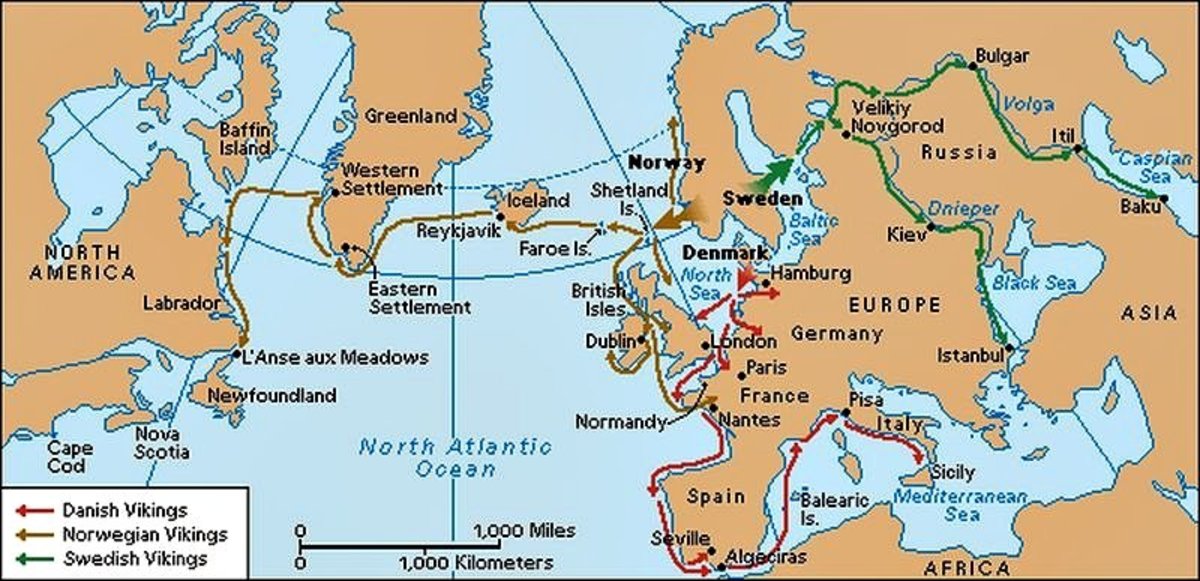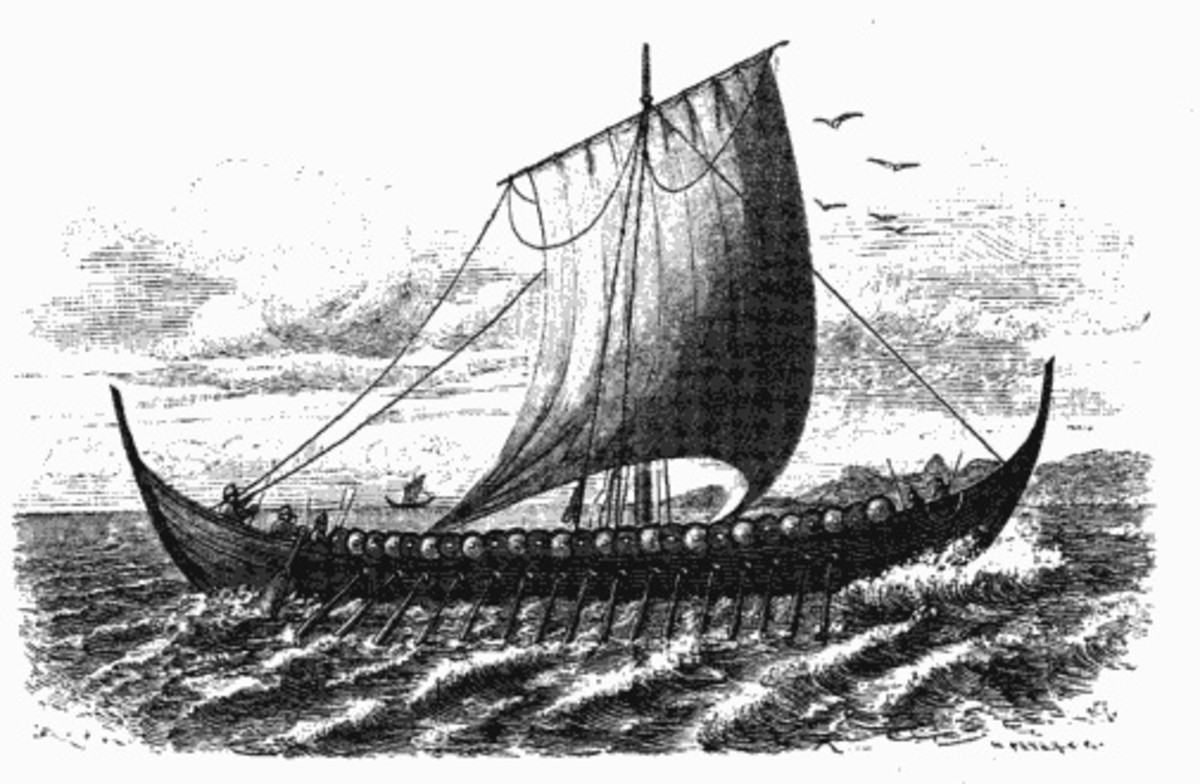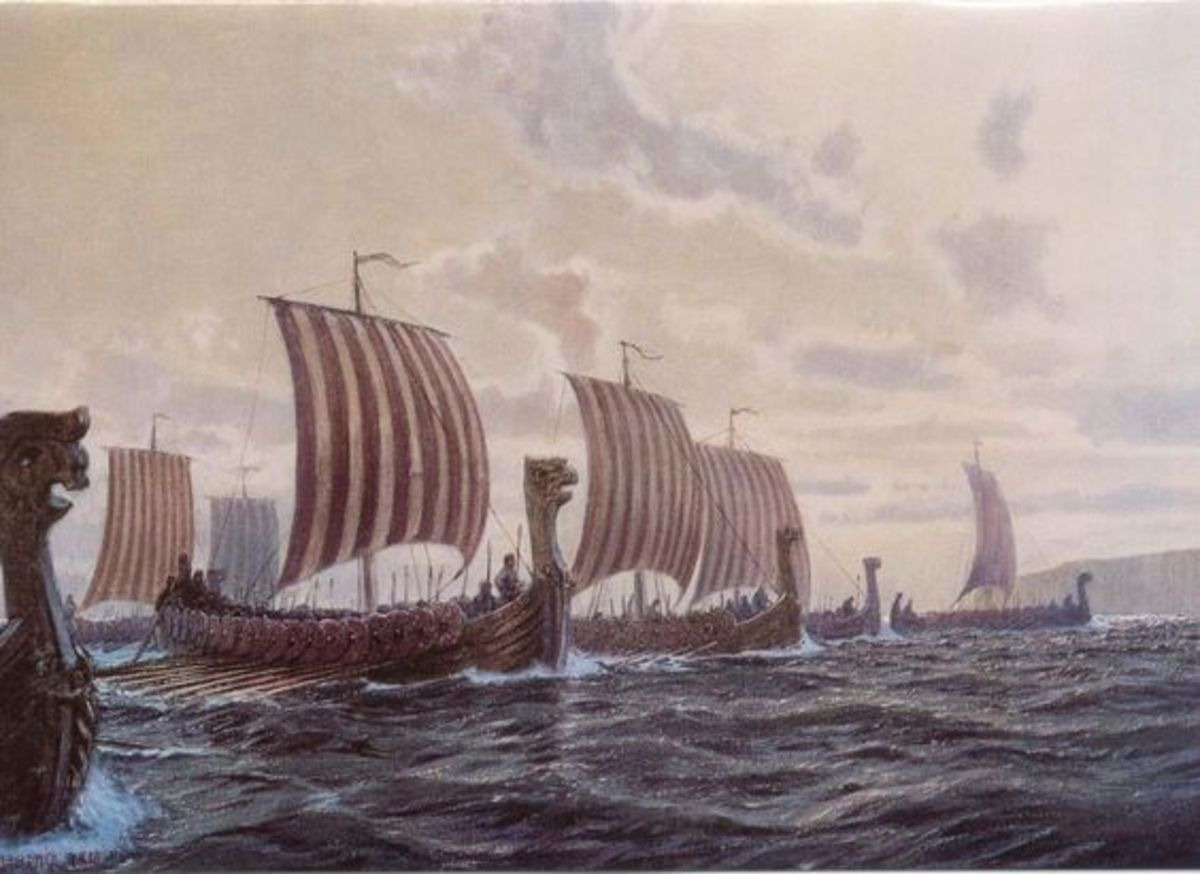Viking Myth Busting
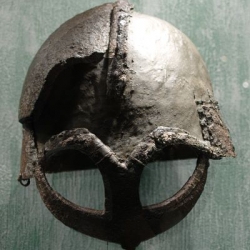
Viking Hordes and Other Tall Tales
It truly astounds me how many historical misconceptions people take for granted as fact. I've previously discussed this in my articles on Medieval Myth Busting and Roman Myth Busting, today I thought I'd delve into, probably the most misunderstood peoples of history. The Vikings!
Just saying the word Viking brings up images of huge dragon shaped boats filled with hordes of red headed madmen wearing horned helmets spoiling for a fight and for a chance to die in hopes of going to Valhalla. But how much of our understanding of Viking culture is tainted by propaganda from their enemies and from that more insidious destroyer of history Hollywood?
Don't fret, I am not going to shatter all illusions of the Vikings, they were indeed fearsome masters of the sea. Warriors of unequaled valour and bravery on the field of combat. They were so much more than this though.
This image is licensed under the Creative Commons Attribution-Share Alike 3.0 Unported license.
Drinking from the Skulls of Their Enemies
An often repeated misconception about the Vikings is that drank mead from the skulls of their enemies. This one comes with some historical evidence to explain where this myth originated. A 17th century document entitled “Reuner seu Danica literatura antiquissima” is often quoted as the source for this ridiculous rumour. This document explains that the Danes drank from the "curved branches of skulls". This is often mistranslated to mean skulls, then for some reason it is extrapolated to mean the skulls of their enemies. However if you consider the phrase "curved branches of skulls" and some of the burial hordes found horns of animals polished up, and the mentions of drinking horns, I think it can be clearly demonstrated that the curved branches of skulls was animal horns.
The Vikings Never Existed in The First Place
The biggest misunderstanding about the vikings is the fact that they even existed, as a unified culture that is. There were no people known as the Vikings ever in history, they don't technically exist. Hard to write an article on the vikings and start out stating they don't exist, but once I expand and clarify it will make sense.
The people who became known as Vikings were quite simply a group of Northern Gemanic tribes during the specific time period known as the Viking Age (roughly 800-1000 CE), the most well known Viking groups were in Scandinavia. The Vikings began as simply farmers and fishers but soon became a global power as they spread out. It began with simple piracy, ships would head out raid then return, eventually they started settling other regions. Angles, Saxons, Norse, Norman, these are all groups who became collectively known as "The Vikings".
The word Viking is derived for the old Norse word for "one who raids" vikingr. Since the vikings were known primarily for their seafaring raids Viking became a name of terror for any coastal settlement within the sphere of Viking power. Exactly which Viking group they came from became irrelevant.
The Horned Helmet
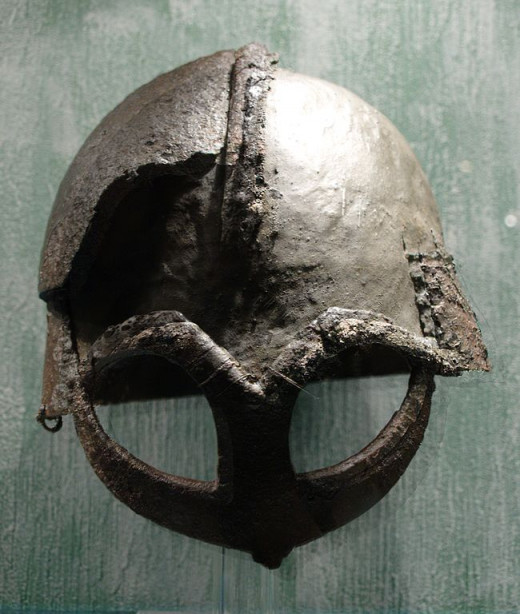
The horned helmets of the vikings is all pervasive. Mention viking and instantly the image of the horned helmet springs to mind. It is so all pervasive that the comic strip Hagar the Horrible shows a prime example of this silly helmet.
These horned helmets would be terribly impractical as a war helm, and pointless for all else. What is more, there is zero evidence that horned helmets were ever worn by any viking culture. To the right I have a picture showing an actual extant viking helmet, as you can see much more functional and practical than a horned helm.
So where does this idea of horned helmets come from? From a variety of sources as it turns out. First we begin with the fact that often horns and helmets were found as grave goods at viking sites, then we move on to the Romans who reported that some northern tribes wore horns on their heads. But the single most effective factor in the creation of the mythos of the horned helmet is Wagner the opera writer. In the late 19th century some producers were looking for costume ideas for Wagners Nibelungenlied in a single bound the horned helmet was firmly plastered into our minds as the horned helmeted opera singers came onto the stage and wowed audiences.
Dirty Hairy Beasts
The image of a wild haired unwashed savage stepping off a boat to rape and pillage your village is the quintessential vision of a viking. I won't argue the rape and pillage, they did indeed do much of this, however I do however question history on the unwashed wild haired savage part.
The Saxons for example looked down on the Danes for excessive cleanliness for their habit of constantly brushing their hair and bathing every Saturday. While the once a week bathing may, to us, confirm the dirty image consider that to this day the use of hot springs as baths and saunas is still a popular daily activity and not considered bathing. The obsessive brushing of the hair seems though to bring into question the concept of wild haired though doesn't it?
Much of the concept of dirty barbarian vikings comes from those who were raided by vikings, people who are seeing the raiders after long sea voyages where water was strictly rationed, and while yes they are surrounded by sea water and bathing in sea water is fine other than washing your face what more can you do in deep sea.
Muslims who encountered the Vikings have a different view, one which at first confirms the myth of the dirty viking but on a closer examination throws the whole concept out the window. It was reported by many Muslims of the time that vikings were dirty disgusting people, their reasoning was the sharing of the morning washbowl which they would also blow their nose into. This does indeed seem a questionable hygiene practice, however it does categorically state that the vikings washed on a daily basis, a practice which was not necessarily a global practice at the time. The Muslims however had very strict person hygiene routines including washing in running water to make sure they are as clean as possible, so the concept of washing in fouled water would horrify then despite it being a large leap up form many other cultures of the day.
To further illustrate the cleanliness of vikings I will point out that Saturday was known as Lördag in Norse culture, Lördag translates literally to washing day. It was a day in the week set aside specifically for washing, and they weren't talking about just bathing, but washing everything, clothes household, everything was to be washed every Saturday. It was almost ritualistic, some historians believe it actually was ritualistic.





